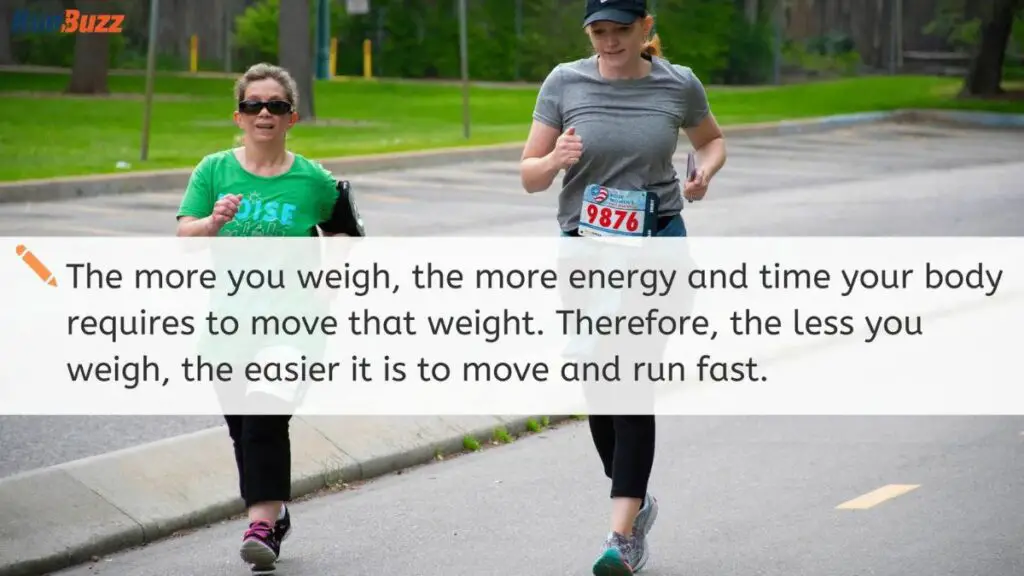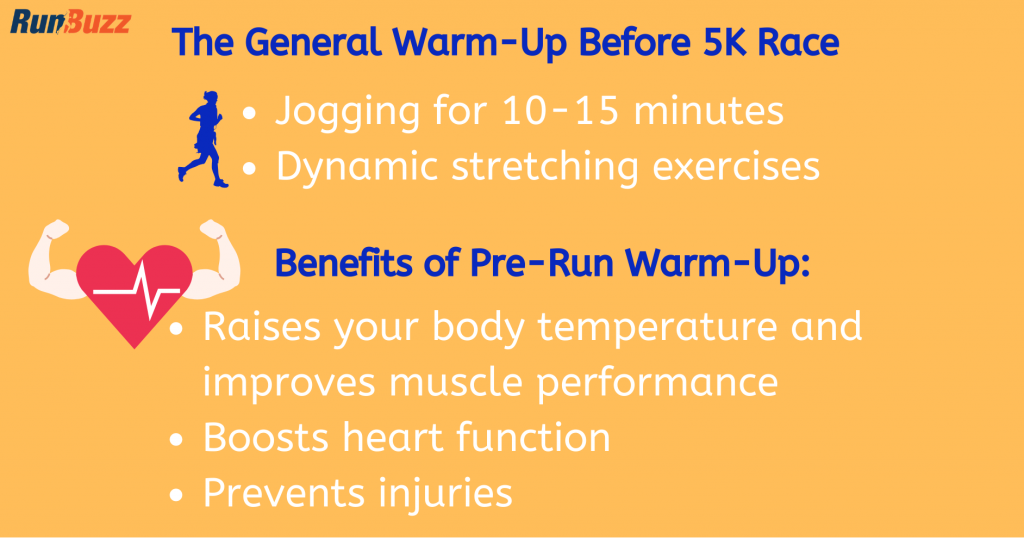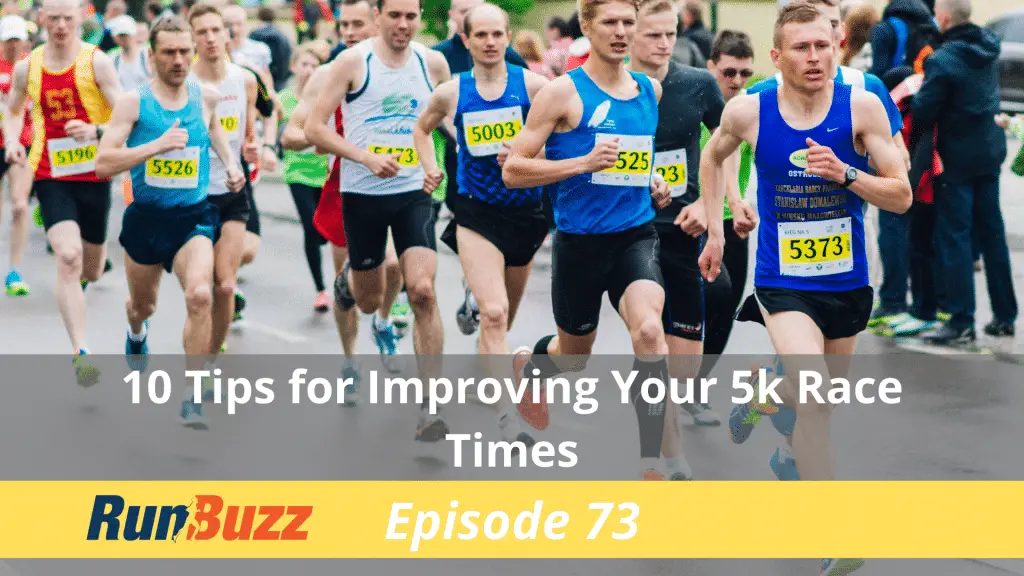If you are training for a 5k (or even a 10k), these running tips will help you improve your race times and possibly even lead to a new PR.
These tips are for runners who have already run a 5k and are ‘race-ready’. If you are a beginner looking to run your first 5k, then your focus should be on building endurance and completion BEFORE you take on speed.
Some of these tips can be applied to your situation (e.g. strength training, etc) but more advanced workouts like track workouts should be skipped early on until your body adapts to handle the increased workload.
10 Running Tips To Get Faster 5k Race Times
#1 Over-Distance Your Long Runs
One of the best ways to maximize your level of fitness is to add volume. For shorter distance races, your longest run of the week should be above and beyond the distance, we want to race at.
This works great for shorter distance races like 5k’s and 10k’s, maybe even half marathons, but starts to negatively impact us when we race at longer distances like marathons due to wear and tear on the body.
For an experienced runner wanting to improve your 5k time, getting to a point where your long runs are around 8-10 miles will do wonders for maximizing your overall cardio fitness level as well as building confidence on race day.
#2 Add Strides
Adding 5-7 strides to the end of one of your steady state, shorter distance runs will help with neuro-muscular speed and leg turnover.
So if you have a shorter 3 or 4-mile run, add a handful of strides to the end of the run.
Use strides as a warm-up prior to a race, or as a finishing touch to the end of a weekday, easy run.
#3 Have a Training Focus for a Particular Race
Instead of showing up for a 5k race on any given Saturday, pick a goal race a few months out mark it as ‘the one‘ you are going to go after. You can always do other races for fun, but having one explicitly dedicated as your 5k PR goal race, will help prepare you mentally.
#4 Add One Track Workout per Week
Mid-week, consider adding a track/speed workout that starts with 400-meter intervals early in the training season and then working up to 800 or even 1600 meter intervals later in the training season.
I also like to alternate in a few Tempo runs every other week to work on strength and stamina in a sustained run of 45-60 minutes. You can play around with the distance and how often you do Tempo runs vs. track workouts but you want to incorporate these types of high intensity runs into your training schedule.
Typically one track workout per week.
#5 Add Strength Workouts (Balance, Stability and Body Weight/Core Training)

Add strength training exercises as you can fit them in during the week. Do variations of single-leg balance drills, hops, jumps, as well as core body exercises.
You can do 5-15 minutes or so each morning when you get up, or in the afternoon when you come home from work, or before bed, or while watching TV. They don’t need to be scheduled, just work to fit them in your schedule.
#6 Focus on Weight Management or Weight Reduction

If you are overweight, getting leaner and lighter can help reduce the amount of energy you need and generally help you run faster. This is an oversimplification, but losing excess fat can help in many cases.
Measure Your Fitness Weight
The body mass index (BMI) can help you estimate your fitness weight. It is not perfect and yes, there are people in incredible shape, muscular and have a high BMI. But, it does give most people a general idea of where they stand.
The Calculation: weight in kg/(height in meters squared).
Example: 75/(1.81×1.81)= 23.15.
Normal BMI results: between 18.5 and 25.
Abnormal BMI results: it exceeds 25 – overweight, below 18.5 – underweight.
#7 Taper
A taper is simply a period of time before a race that you cut your training volume and intensity back so you can rest/heal up before a race. A 5k taper is much shorter than a half or full marathon taper, but it still is an important phase of your training.
That last week or a few days before your 5k should be much easier. Do easy, shakeout runs, a few strides, and leave it at that. Taper length and effectiveness are highly individualized so you may need to experiment with your taper length, but most people seem to do well with a 4 to 5-day taper for a 5k.
#8 Once a Month, Do a Timed One-Mile or Two-Mile Run
This accomplishes two things. One it forces you to run hard and get a little uncomfortable, but it also provides an easy metric you can track over time because as your pace gets faster, your mile or two-mile time reduces.
The longer the distance, the more other things come into play that can impact your time making it hard to do apples to apple comparison, but doing a 1 or 2-mile test run can simulate a “racing the clock” situation and be great practice.
#9 Consistency
Success isn’t always about greatness. It’s about consistency. Consistent hard work leads to success. Greatness will come. – Dwayne Johnson
You race as you train and if you are inconsistent during training, you will leave a lot behind before you even get to the starting line. You don’t have to be perfect, you just have to show up and do the work on a regular basis.
#10 Get to Your Race Early
Get to your race early enough to do a 10-15 warm-up. If you are going into a 5k race to do well, you don’t want to waste the first mile or two getting warmed up. Get away from others a bit and do some easy warm-up strides, maybe a short, easy run, and use the time to get yourself pumped up and into a positive mental state.

- About the Author
- Latest Posts

Steve Carmichael is a running coach, sports performance coach, nutrition coach and has been a recreational runner for over 18 years. Steve holds multiple certifications as a certified running coach through the RRCA and USA Track and Field as well as he is a NASM certified personal trainer, and PN1-L1 certified nutrition coach.
Steve has been coaching since 2010 and has helped thousands of runners online and in the Central Ohio area maximize performance and run injury-free.
Steve is the founder of RunBuzz and Run For Performance.com. If you are interested in working with Steve though his online running and strength coaching services, feel free to reach out.

